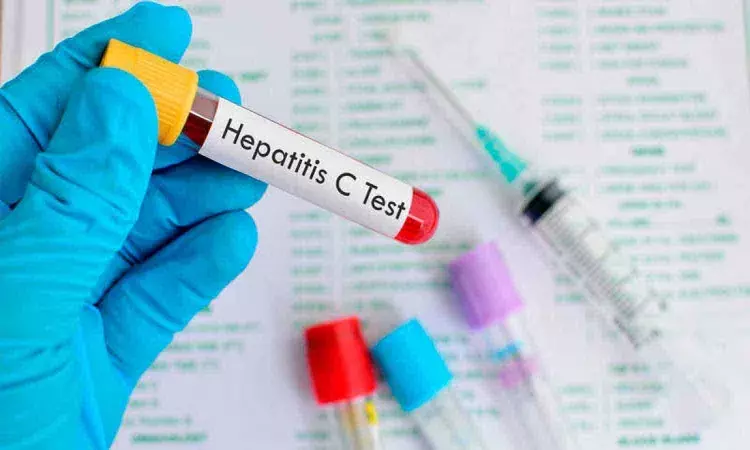- Home
- Medical news & Guidelines
- Anesthesiology
- Cardiology and CTVS
- Critical Care
- Dentistry
- Dermatology
- Diabetes and Endocrinology
- ENT
- Gastroenterology
- Medicine
- Nephrology
- Neurology
- Obstretics-Gynaecology
- Oncology
- Ophthalmology
- Orthopaedics
- Pediatrics-Neonatology
- Psychiatry
- Pulmonology
- Radiology
- Surgery
- Urology
- Laboratory Medicine
- Diet
- Nursing
- Paramedical
- Physiotherapy
- Health news
- Fact Check
- Bone Health Fact Check
- Brain Health Fact Check
- Cancer Related Fact Check
- Child Care Fact Check
- Dental and oral health fact check
- Diabetes and metabolic health fact check
- Diet and Nutrition Fact Check
- Eye and ENT Care Fact Check
- Fitness fact check
- Gut health fact check
- Heart health fact check
- Kidney health fact check
- Medical education fact check
- Men's health fact check
- Respiratory fact check
- Skin and hair care fact check
- Vaccine and Immunization fact check
- Women's health fact check
- AYUSH
- State News
- Andaman and Nicobar Islands
- Andhra Pradesh
- Arunachal Pradesh
- Assam
- Bihar
- Chandigarh
- Chattisgarh
- Dadra and Nagar Haveli
- Daman and Diu
- Delhi
- Goa
- Gujarat
- Haryana
- Himachal Pradesh
- Jammu & Kashmir
- Jharkhand
- Karnataka
- Kerala
- Ladakh
- Lakshadweep
- Madhya Pradesh
- Maharashtra
- Manipur
- Meghalaya
- Mizoram
- Nagaland
- Odisha
- Puducherry
- Punjab
- Rajasthan
- Sikkim
- Tamil Nadu
- Telangana
- Tripura
- Uttar Pradesh
- Uttrakhand
- West Bengal
- Medical Education
- Industry
Prior decompensation and older age increases HCC risk among cirrhosis patients after HCV infection

Australia: Following hepatitis C virus (HCV) treatment, the incidence of hepatocellular carcinoma (HCC) among patients with cirrhosis declines over time and is lowest in individuals who are younger and have compensated cirrhosis. However Prior decompensation and older age is linked to increased risk of HCC among cirrhosis patients.
The study has been published in the journal Hepatology.
Curing HCV lowers but does not completely eradicate the risk of HCC. In populations where the incidence surpasses 1.5 percent annually, HCC monitoring is advised. It is unclear if HCC surveillance in cirrhosis should remain indefinitely following HCV treatment. The suggestions in the guidelines are erratic for individuals with advanced fibrosis (F3). As a result, Ian Lockart and colleagues examined the prevalence of HCC among individuals with F3 fibrosis or cirrhosis following HCV cure.
In this systematic review and meta-analysis, 44 studies measuring the incidence of HCC among patients with F3 fibrosis or cirrhosis following HCV cure were found (107,548 person-years of follow-up).
The key findings of this study were as follows:
1. Patients with cirrhosis had an incidence of HCC of 2.1 per 100 person-years, whereas those with F3 fibrosis had an incidence of 0.5 per 100 person-years.
2. An increased risk of HCC was linked to older age and preceding decompensation in a meta-regression study of individuals with cirrhosis.
3. A lower incidence of HCC was linked to longer follow-up following HCV cure.
In conclusion, the Authors found that HCC incidence in cirrhosis warrants cost-effective screening, but it also suggests that the incidence is declining over time, being least in patients with compensated cirrhosis and younger age. The incidence of HCC is significantly lower and below suggested levels for widespread HCC screening in individuals with F3 fibrosis and HCV cure. It is obvious that a more accurate diagnosis of individuals at risk for HCC following HCV cure will have important consequences for cost-effectiveness and resource usage.
The findings should stimulate the creation of validated prediction algorithms that can more accurately pinpoint those who are at risk, particularly in patients with F3 fibrosis. These findings ought to promote collaboration in order to carry out a sizable multicenter cohort research evaluating HCC risk over time following HCV cure.
Reference:
Lockart, I., Yeo, M. G. H., Hajarizadeh, B., Dore, G. J., Danta, M., Abe, K., Carrat, F., Lusivika‐Nzinga, C., Degasperi, E., Di Marco, V., Hou, J., Howell, J., Janjua, N. Z., Lok, A. S., Wei, L., … Tsai, P. (2022). HCC incidence after hepatitis C cure among patients with advanced fibrosis or cirrhosis: A meta‐analysis. In Hepatology (Vol. 76, Issue 1, pp. 139–154). Wiley. https://doi.org/10.1002/hep.32341
Neuroscience Masters graduate
Jacinthlyn Sylvia, a Neuroscience Master's graduate from Chennai has worked extensively in deciphering the neurobiology of cognition and motor control in aging. She also has spread-out exposure to Neurosurgery from her Bachelor’s. She is currently involved in active Neuro-Oncology research. She is an upcoming neuroscientist with a fiery passion for writing. Her news cover at Medical Dialogues feature recent discoveries and updates from the healthcare and biomedical research fields. She can be reached at editorial@medicaldialogues.in
Dr Kamal Kant Kohli-MBBS, DTCD- a chest specialist with more than 30 years of practice and a flair for writing clinical articles, Dr Kamal Kant Kohli joined Medical Dialogues as a Chief Editor of Medical News. Besides writing articles, as an editor, he proofreads and verifies all the medical content published on Medical Dialogues including those coming from journals, studies,medical conferences,guidelines etc. Email: drkohli@medicaldialogues.in. Contact no. 011-43720751


